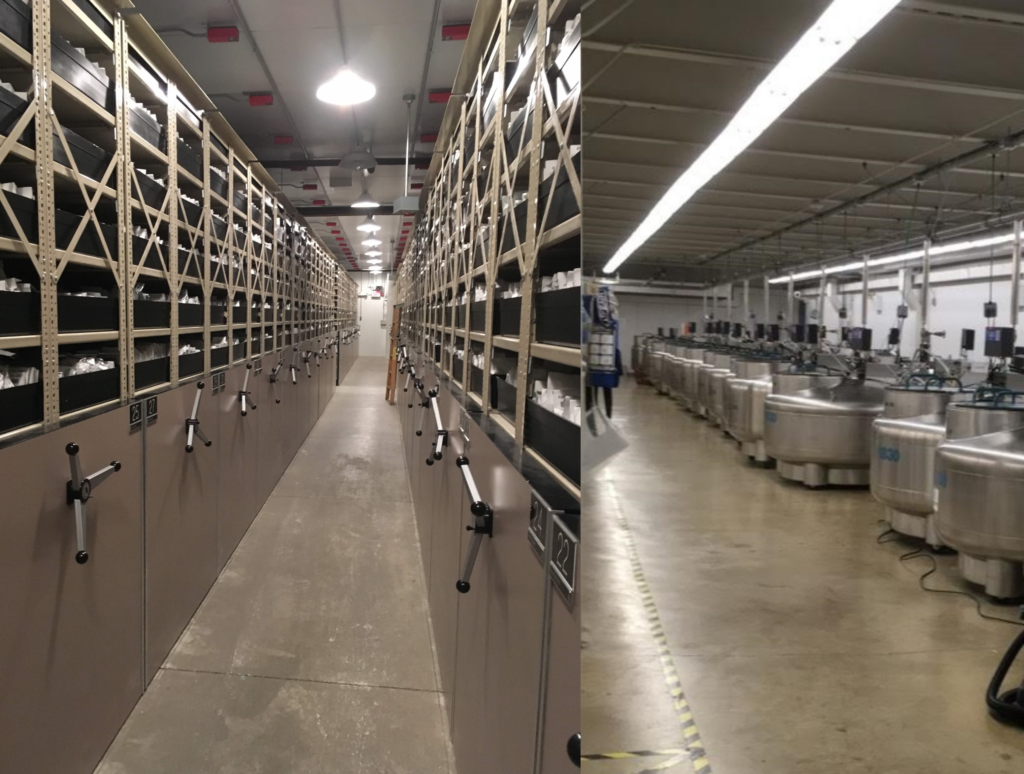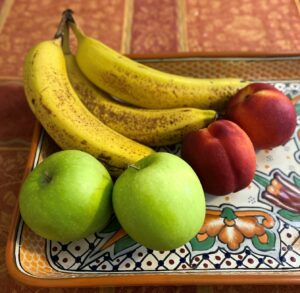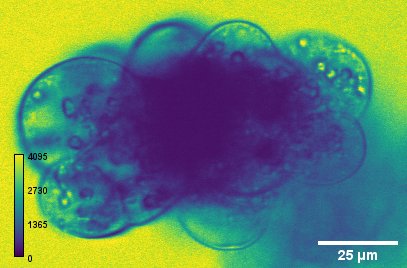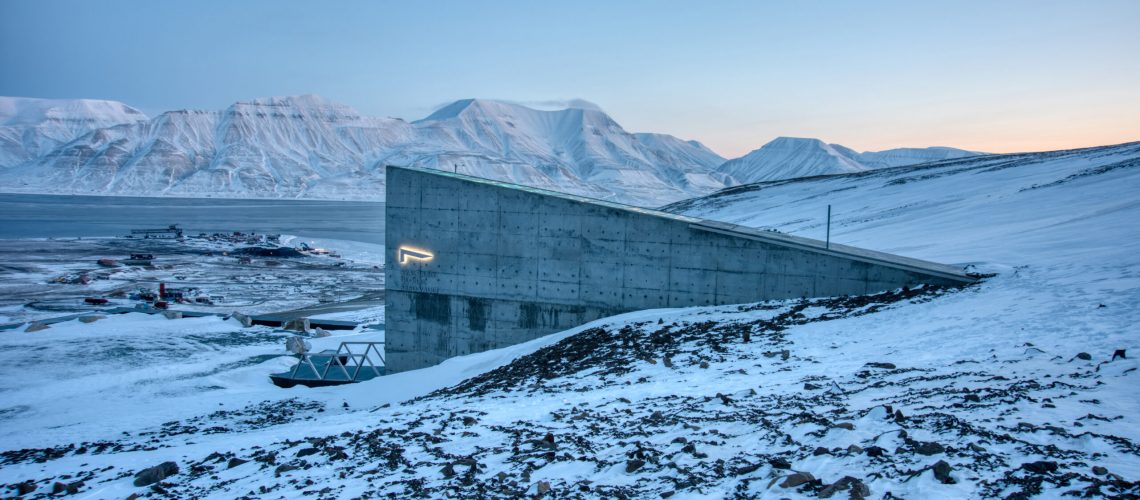Guest Post by Fionna Samuels, 2021-2022 Sustainability Leadership Fellow, and Ph.D. Candidate in the Department of Chemistry at Colorado State University
The Colorado State University campus is home to our own version of the Svalbard Seed Vault. Within the walls of the United States Department of Agriculture (USDA) facility here, there are two distinct areas where plant material is stored. The first is a conventional seed vault. It’s cool, dry, and cut off from the outside world behind locked doors. The space is 5,000 square feet, packed with steel shelves reaching the ceiling. Here, thousands of seed samples lie quietly dormant in carefully labelled white packages.
In an adjacent room, sit dozens of squat silver containers. Each container holds a pool of liquid nitrogen, sitting at a chilly -196 degrees Celsius. Just above the liquid, in the trapped cloud of freezing white vapor, sit cut samples from plants. Some are recognizable – there are many twigs from apple trees, each carefully cut to include at least one bud – while others are almost microscopic tissue slices, folded carefully into aluminum foil. Many of these cryopreserved samples are from species that cannot be conserved with their seeds. Some lack seeds all together, others’ seeds die quickly if they are not planted, and some species have seeds that will produce different offspring than the parent (great for genetic diversity, not great for agriculture).

Almost a million plant samples are conserved between these rooms, representing close to 12,000 different species. This treasure is the genetic backup for all the seed vaults across the United States, and the largest conserved collection housed under one roof. The samples here are a fail-safe for potential agricultural calamity, every seed and clipping a route to re-establishing species.
Unfortunately, there are still many plant species that resist conservation: they cannot be conserved through seeds and cryopreservation only results in frozen brown mush. Tropical species are frequently the most difficult of the bunch. The beloved avocado was only successfully cryopreserved in 2020 by an intrepid graduate researcher at the University of Queensland, Australia, despite decades of attempts by others.

Why does it take so long for a new species to be cryopreserved? You may have guessed that exposing slices of plant tissue to liquid nitrogen is quite traumatic. Luckily, researchers in the 1990s developed a few chemical cocktails to protect cells from the intense cold, like antifreeze in a radiator. Unfortunately, it was quickly realized that these cocktails only worked well for a few species. Other species only got partial protection from the chemicals, while many received no protection at all. When conserving a new species, researchers will invest time and resources tweaking the chemical cocktail slightly as sometimes that is enough to provide some protection.
Researchers are still searching for a fundamental understanding of how different protective chemicals work to protect cells from the frigid temperature of liquid nitrogen. One approach is to directly image where the chemicals go within plant cells – perhaps if we know where different chemicals are in the cell, we can determine if their presence in certain cellular regions is necessary for the survival of the cell.
Vibrational microscopy allows us to directly photograph where protective chemicals go within plant cells. This technique uses chemically unique vibrations to image specific molecules. This is like playing a piano, where each key strike corresponds to one note at a unique vibrational frequency. Instead of generating sound, this microscopy technique uses a laser to strike a molecule and generate a unique vibrational frequency of light. Collecting this light generates an image, which showed us the location of our molecule of interest.
The images we generated with this technology revealed that protective chemicals were not evenly distributed throughout plant cells. This has implications for how well different regions are protected. Like antifreeze, these chemicals both protect from cells from the cold but can also be incredibly toxic for cells at high concentrations. If different parts of the cell are experiencing different concentrations of protective chemicals, it means that some parts may be exposed to lethal levels.

As my research continues, we will use vibrational microscopy to see how different chemicals enter cells and if there are differences in how quickly they reach various parts of the cell. Other members of my group are looking at more structured plant tissues and determining how well protective chemicals move through many layers of cells. We hope that this work will lead to a more fundamental understanding of how different chemicals protect plant cells from the cold and help streamline the process of conserving new plant species and as our climate continues to change and species continue to be lost, streamlining plant conservation is of utmost importance.
Further Reading:
Agricultural Genetic Resources Preservation Research: USDA ARS. (n.d.). Retrieved March 30, 2022, from https://www.ars.usda.gov/plains-area/fort-collins-co/center-for-agricultural-resources-research/paagrpru/
Cryo success at Queensland delivers 1st “frozen” avocado tree. (2020, September 10). Sustainability Times. https://www.sustainability-times.com/environmental-protection/cryo-success-at-queensland-delivers-1st-frozen-avocado-tree/
Samuels, F. M. D., Stich, D. G., Bonnart, R., Volk, G. M., & Levinger, N. E. (2021). Non-Uniform Distribution of Cryoprotecting Agents in Rice Culture Cells Measured by CARS Microscopy. Plants, 10(3), 589. https://doi.org/10.3390/plants10030589






